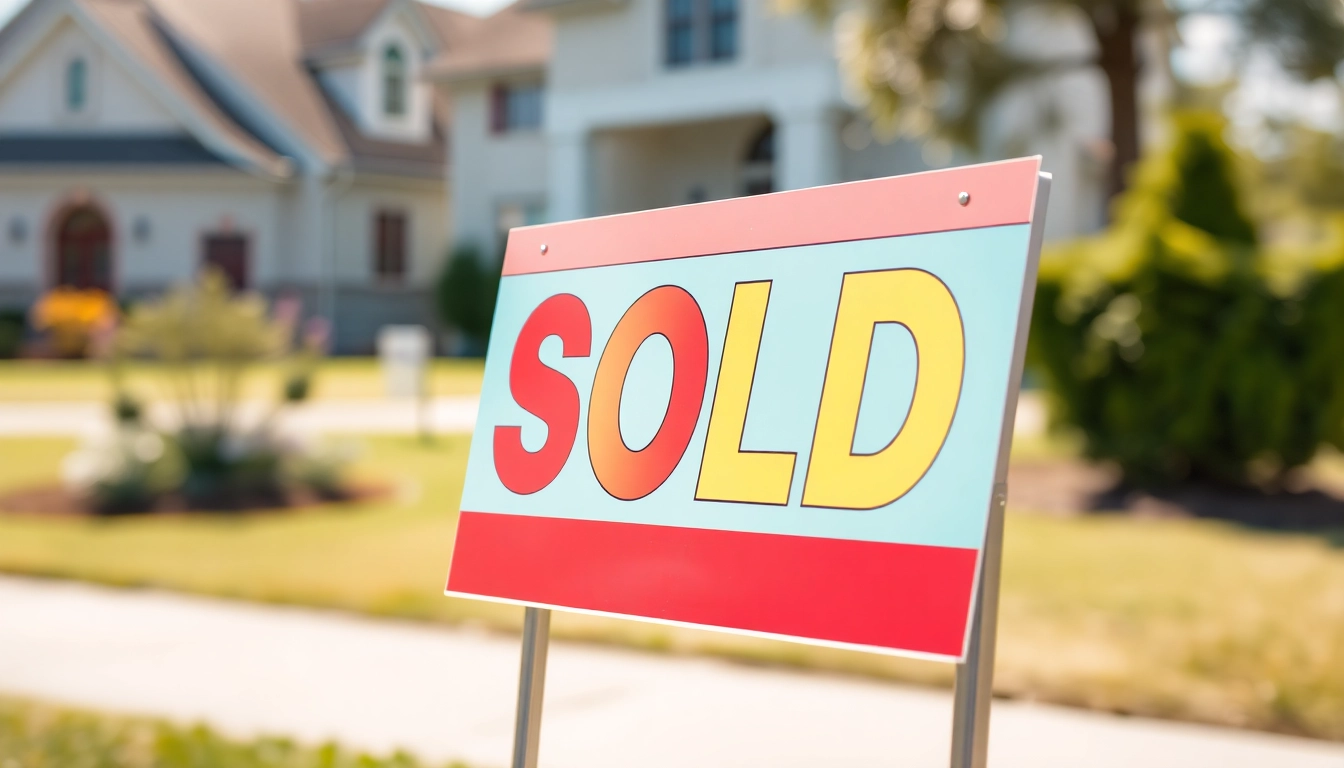Understanding the Importance of Sold Signs in Real Estate
In the competitive world of real estate, every detail counts when it comes to marketing properties and closing deals efficiently. Among the many tools at a realtor’s disposal, sold sign play a crucial role in signaling a successful sale, attracting future clients, and establishing a professional presence in the community. These signs are more than just markers indicating a property has been sold—they’re strategic assets that can influence perceptions, boost credibility, and expand a realtor’s brand visibility.
Role of Visual Signs in Property Sales
Visual signage has long been an integral part of real estate marketing. A well-designed sold sign not only informs passersby that the property is no longer available but also serves to attract potential clients who may be interested in listing their property or seeking similar homes. The visual impact of a professionally crafted sold sign enhances visibility from afar, especially in busy neighborhoods or along high-traffic streets. Moreover, these signs serve as instant recognition of a realtor’s success, creating a subtle yet powerful marketing loop that perpetuates brand awareness and trust.
How Sold Signs Influence Buyer Perceptions
Buyers often interpret a sold sign as a sign of a thriving local market and a reputable, active real estate agent. When strategically placed and professionally made, sold signs can foster confidence, suggesting that the agent is competent and successful, which in turn attracts more clients. Conversely, a poorly designed or damaged sign can diminish perceived professionalism, potentially deterring future clients. Authenticity and clarity are key—buyer perceptions are influenced by the quality, clarity, and positioning of these signs, making it vital for realtors to invest in quality and strategic placement.
Legal and Ethical Considerations for Sold Signs
While selling signs are essential marketing tools, it is imperative to adhere to local regulations and ethical standards. Many jurisdictions have rules regarding signage placement, size, and removal timelines to ensure safety and community aesthetics. Realtors must stay compliant with local ordinances, such as obtaining necessary permits or respecting restrictions on sign size and location. Additionally, transparency about the current status of properties and avoiding staged or misleading signage reinforces trust and professionalism, which are foundational to ethical real estate conduct.
Designing High-Impact Sold Signs for Realtors
Key Elements of an Effective Sold Sign
An effective sold sign combines several essential elements that work harmoniously to attract attention and convey professionalism. These include clear property status, attractive color schemes, legible typography, and a memorable branding component. The use of bold, contrasting colors—such as red, green, or black on a neutral background—ensures visibility from a distance. The inclusion of a logo, contact information, and a compelling call-to-action (e.g., “Sold!” or “Just Sold by [Name]”) makes the sign not just informative but also engaging.
Customization Tips for Branding Consistency
Consistency in branding enhances recognition and builds trust. Customization options like incorporating a realtor’s logo, personalized colors, fonts, and messaging help reinforce brand identity. For instance, using a consistent color palette across every sold sign—from yard signs to digital media—creates a unified and professional look. Personalization can also extend to adding a photograph of the sold property or the agent, further elevating the professional appearance and memorability of the signage.
Materials and Durability for Various Climates
Property signage must withstand diverse weather conditions, from intense sun and rain to snow and wind. Materials such as corrugated plastic, aluminum, and weather-resistant vinyl are popular choices for durability. For outdoor signs, UV-resistant inks and coatings prevent fading, ensuring the sign remains visible and professional-looking over time. When selecting materials, consider the local climate—areas prone to harsh weather demand more robust options to maintain aesthetic quality and signage integrity throughout the selling process.
Best Practices for Selling and Displaying Sold Signs
Strategic Placement for Maximum Visibility
Placement is critical for maximizing the impact of sold signs. Ideal locations include prominent road-facing yards, intersections, and property entrances where they can be seen by the most foot and vehicular traffic. Positioning the sign at eye level and ensuring it is not obstructed by trees, fences, or parked vehicles boosts visibility. Additionally, placing signs on both sides of a busy street can increase exposure, especially in fast-moving traffic areas.
Timing and Updating Signs Post-Transaction
Once the property is under contract or the transaction is finalized, timely updating of signage is vital. Some jurisdictions require the removal of sold signs within a certain timeframe, typically 24 to 48 hours after closing. Prompt removal not only complies with legal standards but also cleans up the marketing landscape, preventing confusion among prospective buyers. Additionally, some agents strategically leave the sold sign in place until the closing date to increase ongoing visibility during the final marketing push.
Integrating Sold Signs with Marketing Campaigns
Sold signs should be part of a holistic marketing strategy. Complement signage with digital advertising, social media announcements, and email marketing to maximize outreach. For example, including a photo of the sold sign on social media and tagging the property can generate additional engagement. Some real estate professionals incorporate QR codes on sold signs, linking passersby to online listings or agent websites, thus bridging offline and online marketing efforts for a comprehensive approach.
Digital Alternatives to Traditional Sold Signs
Using Online Listings and Virtual Signage
In the digital age, real estate marketing has expanded beyond physical signage. Online listings on multiple platforms, virtual tours, and digital banners serve as virtual sold signs that reach a broader audience. These digital elements can complement physical signs or, in some cases, replace them, especially in areas with restrictive signage laws or high visual clutter.
Incorporating QR Codes and Augmented Reality
QR codes are transforming the way properties are marketed. Placed on sold signs, QR codes can link to detailed property histories, virtual tours, or agent contact pages, providing instant digital engagement. Augmented reality (AR) applications can further enhance this experience, allowing potential buyers to visualize the property on their smartphones. These advanced tools create interactive experiences and foster deeper connections with prospective clients.
Social Media Strategies for Promoting Sold Listings
Social media platforms are powerful channels for announcing sales, building brand awareness, and attracting new clients. Publishing photos of sold signs, success stories, and client testimonials can showcase your track record. Using targeted advertising, local communities, and relevant hashtags can increase visibility in your service area. Sharing behind-the-scenes content about the selling process humanizes your brand and encourages engagement.
Measuring the Effectiveness of Sold Sign Campaigns
Tracking Buyer Engagement and Leads
Monitoring how потенциаль buyers interact with sold signs is essential for evaluating success. Implementing QR codes or unique contact numbers on signs helps track inquiries and conversions. Additionally, observing the number of calls, emails, or visits generated post-sign placement can provide valuable metrics on the sign’s impact.
Assessing ROI and Brand Impact
Return on investment (ROI) can be assessed by correlating signage campaigns with increased leads, listings, and closings. Tracking metrics over time, such as the number of new clients gained after deploying a signage campaign, offers insight into its effectiveness. A strong brand presence reinforced through high-quality signage can also lead to repeat business and referrals, amplifying long-term returns.
Adjusting Strategies Based on Performance Data
Data-driven decision-making enables realtors to refine their signage approach. If certain signs or placements yield higher engagement, focus resources accordingly. Conversely, if campaigns underperform, evaluate elements like signage design, location, and messaging. Continuous testing, coupled with performance analytics, ensures that signage strategies remain optimized for maximum impact.







